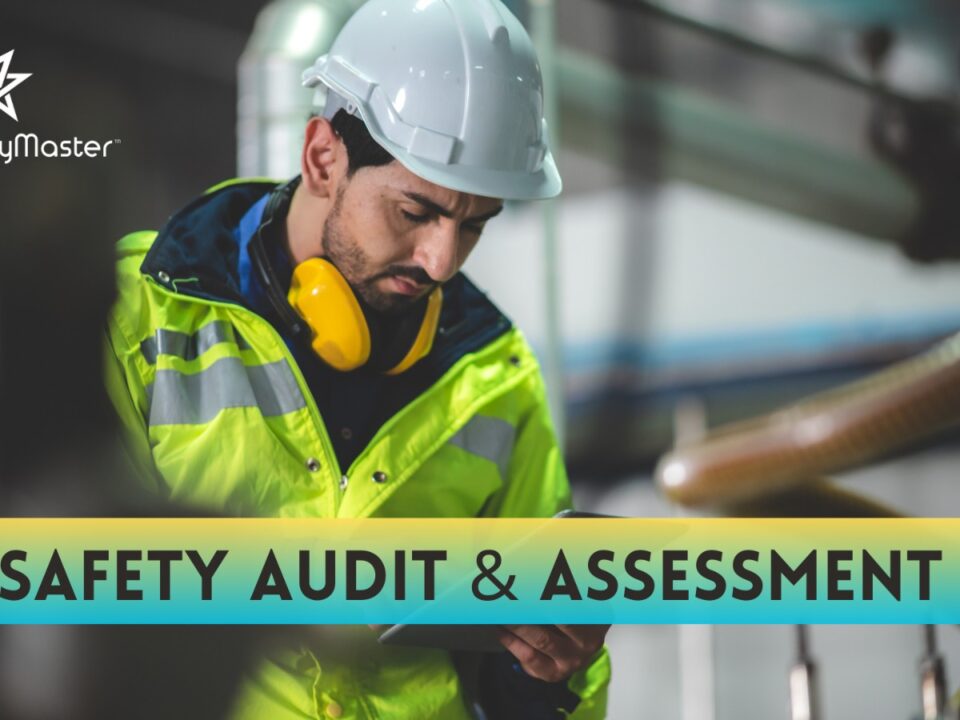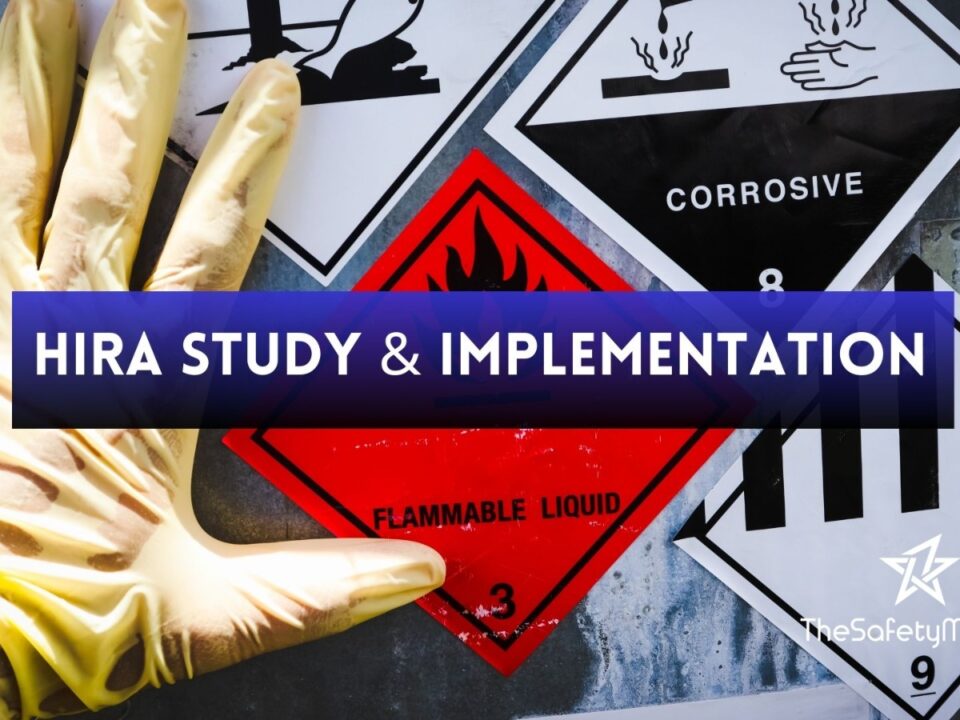EHS Audit & Report: The Importance of Regular Audits for a Safe and Compliant Workplace

Powerful Steps to Conduct an Effective Safety Audit: The Ultimate Guide
February 15, 2025
Leveraging Technology for Enhanced Job Safety Analysis & Common Mistakes to Avoid in Job Safety Analysis
February 18, 2025Maintaining a safe and compliant workplace is a critical responsibility for any organization. Ensuring that employees work in a safe environment not only protects them from harm but also safeguards the company from legal liabilities, financial losses, and reputational damage. One of the most effective ways to ensure workplace safety and compliance is through regular Environmental, Health, and Safety (EHS) audits. This comprehensive approach to safety management helps identify potential hazards, ensure compliance with regulations, and implement necessary improvements.
What is an EHS Audit?
An EHS audit is a systematic evaluation of a company’s environmental, health, and safety programs and practices. It assesses compliance with relevant laws and regulations, identifies potential risks, and evaluates the effectiveness of existing safety measures. EHS audits can cover various aspects, including occupational safety, environmental impact, chemical management, and emergency preparedness.
The Importance of Regular EHS Audits
Regular EHS audits are crucial for several reasons, each contributing to the overall safety and efficiency of the workplace. Here are some key reasons why these audits are indispensable:
- Ensuring Regulatory Compliance
One of the primary purposes of an EHS audit is to ensure that the organization complies with all relevant laws, regulations, and standards. Regulatory requirements can be complex and vary by industry and location. Regular audits help keep the company updated with the latest legal obligations, preventing non-compliance penalties and legal actions.
- Identifying and Mitigating Risks
EHS audits play a vital role in identifying potential hazards that could harm employees or the environment. By systematically reviewing processes, equipment, and practices, auditors can pinpoint areas of concern and recommend corrective actions. This proactive approach helps in mitigating risks before they lead to accidents or incidents.
- Enhancing Workplace Safety
The primary goal of EHS audits is to create a safer workplace. Regular audits help in recognizing unsafe conditions and behaviors that could lead to injuries or illnesses. By addressing these issues, organizations can significantly reduce the likelihood of workplace accidents, ensuring the well-being of their employees.
- Improving Efficiency and Productivity
A safe workplace is often a more efficient and productive one. When employees feel safe and secure, their morale and productivity increase. EHS audits help streamline safety procedures, eliminate unnecessary steps, and improve overall operational efficiency, leading to better performance and higher job satisfaction.
- Protecting the Environment
Environmental audits, a component of EHS audits, assess the company’s impact on the environment. Regular audits ensure that the organization adheres to environmental regulations, manages waste responsibly, and minimizes its ecological footprint. This not only protects the environment but also enhances the company’s reputation as a responsible corporate citizen.
- Cost Savings
While EHS audits require an initial investment, they can lead to significant cost savings in the long run. By identifying and addressing potential hazards, companies can avoid costly accidents, fines, and lawsuits. Furthermore, improving operational efficiency and reducing waste contribute to overall cost reduction.
- Fostering a Culture of Safety
Regular EHS audits demonstrate the organization’s commitment to safety and compliance. This fosters a culture of safety where employees are more likely to follow safety protocols and report potential hazards. A strong safety culture enhances overall workplace morale and reduces the likelihood of accidents.
Key Components of an EHS Audit
To be effective, an EHS audit should be comprehensive and cover various aspects of workplace safety and environmental management. Here are some key components:
- Process Safety Management
Process Safety Management (PSM) focuses on preventing the release of hazardous chemicals and ensuring safe manufacturing processes. During an EHS audit, PSM evaluates the company’s handling of dangerous substances, equipment integrity, and emergency preparedness. Effective PSM can prevent catastrophic incidents and protect both employees and the environment.
- Fire Safety
Fire safety is a critical aspect of workplace safety. A thorough fire audit assesses the company’s fire prevention measures, emergency response plans, and compliance with fire safety regulations. It includes inspecting fire extinguishers, alarms, sprinkler systems, and evacuation procedures. Regular fire audits help in preventing fire-related incidents and ensuring a swift response in case of emergencies.
- Employee Training and Awareness
Training is a cornerstone of effective EHS management. The audit should review the organization’s training programs, such as Process Safety Management Training, to ensure that employees are adequately informed about safety protocols and emergency procedures. Continuous training and awareness programs help in maintaining a high level of safety consciousness among employees.
- Chemical Management
Proper chemical management is essential to prevent accidents and environmental contamination. The audit should evaluate how chemicals are stored, handled, and disposed of, ensuring compliance with relevant regulations. It should also assess the availability of Material Safety Data Sheets (MSDS) and employee training on chemical safety.
- Ergonomics
Ergonomic assessments focus on designing workstations and processes that minimize physical strain and prevent musculoskeletal disorders. The audit should evaluate the ergonomic practices within the workplace and recommend improvements to enhance employee comfort and productivity.
- Emergency Preparedness
Emergency preparedness is crucial for responding effectively to accidents, natural disasters, or other unforeseen events. The audit should assess the company’s emergency response plans, drills, and employee readiness. Regular audits ensure that the organization is well-prepared to handle emergencies and minimize their impact.
Steps in Conducting an EHS Audit
Conducting an EHS audit involves several steps, each aimed at ensuring a thorough evaluation of the company’s safety and environmental practices:
- Planning
The audit process begins with planning, where the scope, objectives, and methodology are defined. This includes determining which areas and processes will be audited and setting a timeline for the audit.
- Data Collection
During this phase, auditors gather relevant data through observations, interviews, document reviews, and inspections. This helps in understanding the current state of the company’s EHS practices and identifying areas of concern.
- Analysis
The collected data is analyzed to identify gaps, non-compliance issues, and potential hazards. Auditors assess the effectiveness of existing safety measures and determine the root causes of identified problems.
- Reporting
The findings of the audit are compiled into a comprehensive report. This report highlights areas of non-compliance, potential risks, and recommended corrective actions. It should be clear, concise, and actionable, providing a roadmap for improvement.
- Follow-Up
The audit process does not end with the report. A follow-up is essential to ensure that the recommended corrective actions are implemented. Regular follow-up audits help in maintaining continuous improvement and ensuring that the company remains compliant with EHS regulations.
Conclusion
Regular EHS audits are essential for maintaining a safe and compliant workplace. They help identify potential hazards, ensure regulatory compliance, improve efficiency, and protect both employees and the environment. By investing in regular EHS audits and taking corrective actions, organizations can create a safer, more productive, and legally compliant workplace. This proactive approach not only protects the company from legal and financial repercussions but also enhances its reputation as a responsible and ethical employer.



